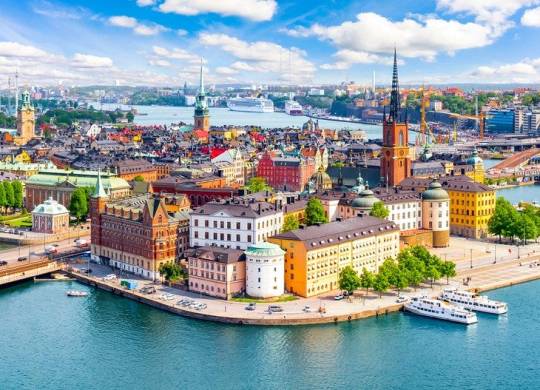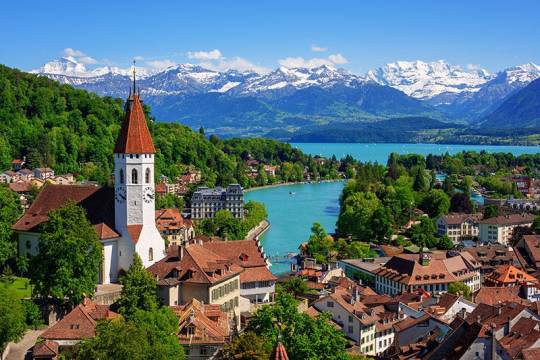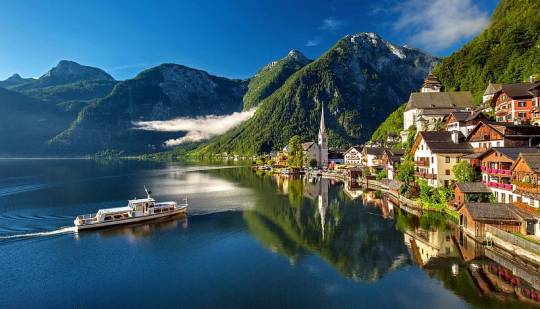#carbon footprint calculators
Explore tagged Tumblr posts
Text
Air Chathams' carbon offset journey with TTI and CarbonClick

Integrated voluntary flight offsetting
About Air Chathams Proudly New Zealand-owned and operated. Flying over the skies of New Zealand, Australia, and the South Pacific, including Whakatāne, Kāpiti Coast, Whanganui, Wellington, Christchurch, Chatham Islands and Norfolk Island. Air Chathams was founded with a simple objective: to offer aviation solutions for a remote, isolated island community so they could further develop into the thriving economy we see today. They are a customer-focused and solution-orientated airline, who thrive on being innovative problem solvers, that deliver safe, efficient, and sustainable outcomes for the many communities throughout Aotearoa and the Pacific that they serve.
About TTI (Travel Technology Interactive) Travel Technology Interactive is an international and leading technology company listed on EURONEXT Growth in Paris, has been an AMADEUS IT GROUP worldwide business partner since 2005, and has also been recognized as an IATA Simplifying the Business (StB) Preferred Partner since 2006. TTI provides seamless cloudification for end-to-end Passenger Service Systems (PSS) and Cargo Management Systems (CMS) for the transportation industry. Headquartered in France, TTI offices are located worldwide: in Brazil, Singapore, and Panama.
The challenge Air Chathams set out on a mission to shrink their carbon footprint across all facets of their operations. They were eager to involve their customers in this quest and aimed to have 30% of passengers choosing to offset their carbon emissions when booking flights by May 2025.
To reach this ambitious target, they needed a solution that seamlessly integrated into their booking system, which is managed by Passenger Service System (PSS) provider Travel Technology Interactive (TTI). Close collaboration among Air Chathams, TTI, and CarbonClick was essential to create a simple, user-friendly, and integrated solution.
The solution CarbonClick and TTI joined forces to pioneer the very first end-to-end carbon offset Internet Booking Engine (IBE) solution that is fully integrated into a single PSS. Working closely with Air Chathams, CarbonClick ensured the service's visual and tonal alignment with their booking process, as an integral part of ancillary offerings.
When booking a flight, passengers now have the option to calculate their carbon footprint and learn how their decision to offset emissions contributes to making a positive impact on the planet and society. Every contribution is directly and instantly traceable to the climate projects it supports, providing passengers with a clear and immediate understanding of their positive impact.
The cost of the offset is displayed as a separate line item in the total booking cost.
The outcome Traditionally, the extensive time and expense required for such an integrated solution deterred many airlines from implementing similar programmes. As a result, only a handful of global carriers have adopted end-to-end integrated initiatives to date.
The partnership between TTI and CarbonClick empowers all of TTI's airline clients to seamlessly implement the solution and incorporate it into their passenger booking systems in just a matter of days. Air Chathams proudly became the first TTI customer to adopt this innovative carbon offset solution.
Air Chathams customers not only can easily add the carbon offset ancillary when booking online, but TTI and CarbonClick ensured that their reservations team were able to easily add the carbon offset to their customers bookings over the phone or email too, via the backend of TTI. This was an important element for Air Chathams as their customers highly value the ability to talk to a real-life person to make a reservation.
Why Air Chathams chose to work with CarbonClick “CarbonClick’s project range and quality appealed to us. They could offer us a local project to include into our mix, and their rigorous selection methodology assured us of the quality of the projects. With Air Chathams being the first TTI airline to integrate the solution into our booking system, we found CarbonClick to be very flexible to accommodate our needs and requirements. Another benefit was that CarbonClick provided us with a templated supporting webpage which we could set up within minutes. This webpage helps tell our sustainability story and engage our customers in offsetting at any stage. We are also related to CarbonClick due to being a fellow New Zealand business.” Estelle Bray-Taylor, Marketing and Communications Advisor, Air Chathams
“At Air Chathams we recognise our role within aviation to mitigate our climate footprint internally and in the communities, we do business with, for the long-term. That is why partnering with CarbonClick enables us to deliver simple and transparent carbon offsetting options for our customers. New Zealanders of all ages are aware of climate change and its adverse effects. So, collaborating and working with CarbonClick empowers the Airline to offer verified off-setting projects through our online booking system. It’s a simple and intuitive process to offset carbon emissions when purchasing flights through our website and follow the progression of meaningful and transparent carbon offsetting projects both home and abroad on CarbonClick’s digital platform. CarbonClick and Air Chathams share the same origins in Aotearoa and a joint ethos to effectively reduce greenhouse gas in the atmosphere and long may it this partnership continue.” Duane Emeny, Chief Operating Officer, Air Chathams
ORIGINALLY FOUND ON- Source: CarbonClick(https://www.carbonclick.com/news-views/air-chathams-carbon-offset-journey-with-tti-and-carbonclick)

#carbon footprint calculator#carbon offsets#carbon offset#carbon offsetting#carbon calculator#calculate your carbon footprint#carbon footprint calculators#purchase carbon offsets#offset your carbon footprint
1 note
·
View note
Text
CarbonClick

CarbonClick enables businesses and their clientele to mitigate carbon emissions effectively through straightforward, impactful, and transparent carbon offsetting solutions. With CarbonClick, enterprises can enhance their sustainability endeavors and contribute positively to environmental conservation. Trusted by more than 1,100 brands worldwide, CarbonClick holds certification as a B Corp, ensuring adherence to rigorous criteria for social and environmental responsibility.
Visit Our Website
#carbon footprint calculator#carbon offsets#carbon offset#carbon offsetting#carbon calculator#calculate your carbon footprint#carbon footprint calculators#purchase carbon offsets
0 notes
Text
when i was in a level psychology my teacher once asked my class how long we thought we had left before our species went extinct. most of us gave variations in the realm of thousands of years, but my friend said it would be within this century. when we asked her why she just said 'idk i just don't think we're going to last much longer' and we all laughed it off and said she was just being pessimistic. but now i see the way the world is absolutely refusing to respond to climate change the way it needs to and i think she was right.
#i am a sustainability consultant#i calculate carbon footprint#develop net zero strategies#put together impact assessments related to climate change#ive had clients tell us that they literally don't care about reducing their carbon footprint#ive had clients saying that the board doesnt want to approve the funding needed for the interventions we've recommended#ive had clients who very clearly only care about their project so far as it ticks a box#it's so demoralising#climate change
13 notes
·
View notes
Text
saw someone recommending an environmentalism app that will 'really help you make good choices and has lots of good info' and i was like hm. well maybe there's something new on there. im vaguely curious.
first thing it hits me in the face with is uwu take five minute showers
#i was hoping like 'if u have to purchase plastic this is the least harmful shit' not. this goddamn nonsense#if u ask me to calculate my carbon footprint im throwing u out the door#gigi.txt#this is not how it WORKS like on one hand i hate the ppl who are like uwuuwuwu well its the big corporATIONS ruining everything#and its like. i mean yeah. but your lifestyle will have to drastically change u realize that like the western hyperconsumerism that happens#will. need to change.#i mentioned to my sister once that u should wear each item of clothing 30 times and she laughed and was like 'thats so unreasonable'#'i could never do that for a lot of my clothes' okay stop fucking buying more then#but on the other hand the ppl who act like if everyone 'reduces their carbon footprint!!!' and 'takes shorter showers!!!' and shit like#thats not gonna fucking save us. are u joking.#im gonna go read some fucking naomi klein
4 notes
·
View notes
Text
Practical Sustainability: Real-World Examples of Carbon Footprint Analysis for Small and Medium-Sized Businesses (SMBs)

In the realm of sustainability, small and medium-sized businesses (SMBs) play a crucial role in driving positive environmental change. This blog post sheds light on practical examples of carbon footprint analysis tailored specifically for SMBs. By exploring these real-world scenarios, smaller enterprises can glean insights into actionable steps toward a more sustainable and eco-conscious business model.
1. Office Operations: Carbon Footprint of Everyday Activities
Scenario:
An SMB with a central office space aims to assess the carbon footprint associated with its daily operations.
Carbon Footprint Analysis:
Energy Consumption: Evaluate electricity and heating/cooling usage.
Transportation: Assess emissions from employee commuting and business travel.
Waste Management: Examine the environmental impact of waste disposal.
Insights and Actions for SMBs:
Remote Work Policies: Encourage remote work to reduce office energy consumption.
Sustainable Commuting: Promote eco-friendly commuting options for employees.
Waste Reduction: Implement recycling initiatives and reduce single-use items.
2. Retail Business: Carbon Footprint of Product Shipping
Scenario:
An SMB operating an online retail business wants to understand the carbon footprint associated with product shipping.
Carbon Footprint Analysis:
Logistics: Assess emissions from shipping carriers and transportation methods.
Packaging: Examine the environmental impact of packaging materials.
Last-Mile Delivery: Evaluate emissions from the final leg of the delivery process.
Insights and Actions for SMBs:
Eco-Friendly Packaging: Opt for sustainable and minimalistic packaging.
Local Sourcing: Consider sourcing products locally to reduce transportation emissions.
Consolidated Shipping: Implement strategies for consolidated and efficient shipping.
3. Manufacturing Workshop: Carbon Footprint of Production Processes
Scenario:
A small manufacturing workshop wants to analyze the carbon footprint associated with its production processes.
Carbon Footprint Analysis:
Raw Materials: Assess emissions from raw material extraction and transportation.
Manufacturing Equipment: Evaluate energy consumption during production.
Waste Generation: Examine emissions related to waste disposal.
Insights and Actions for SMBs:
Sustainable Materials: Source materials with lower environmental impact.
Energy-Efficient Practices: Adopt energy-efficient machinery and practices.
Waste Reduction: Implement recycling programs and reduce production waste.(Read More…)
0 notes
Text
0 notes
Text
What’s the Environmental Impact of Your Website?
New Post has been published on https://thedigitalinsider.com/whats-the-environmental-impact-of-your-website/
What’s the Environmental Impact of Your Website?
The web was once commonly thought to be a “green” platform. That makes sense, given the times. Electronic documents weren’t as popular. Using a website could save lots of printer paper and ink.
Yes, websites often eliminate the need for physical copies of documents. But there was much we didn’t consider in those days.
We didn’t think about massive server farms and the electricity required to run them. Nor did we consider the resources needed to load every image, video, and passage of text in a browser. And what about the costs associated with creating content?
Websites have an impact on our environment. Every site is an offender to some degree. The good news is that we can always do better.
Let’s examine the relationship between the web and the planet. Along the way, we’ll show you how to measure your website’s impact. And we’ll offer tips for reducing its carbon footprint.
The Web Designer’s Toolbox
Unlimited Downloads: HTML & Bootstrap Templates, WordPress Themes & Plugins, and much, much more!
The Importance of Sustainable Web Design
Web design is a multifaceted process. We create beautiful user interfaces. But there are other areas of focus. Websites also need to be usable and accessible.
We should now add sustainability to the equation. The world has moved online. Power consumption continues to grow. Thus, it’s worth considering how our decisions impact the environment.
Sustainable web design may sound scary – like it will require drastic measures. Eliminating the use of images due to their carbon footprint, for example. However, it may be more familiar than we think.
Sustainability and performance can go hand-in-hand. Performant practices can also be a win for the planet. It stands to reason that a page that loads quickly will also require fewer resources.
There are areas where the two may diverge, though. Web hosting is a prime example. Using a beefed-up server benefits performance. But that also comes with higher energy usage.
The path to being gentler on Mother Earth isn’t always a straight line. Doing right by your clients and the environment takes careful thought. Web designers must now view these processes through a different lens.
Perhaps you’re now wondering about your website’s environmental impact. So, how can you measure it?
Several web applications are available to help. We’ll choose Website Carbon Calculator for our example. The service has developed a methodology for calculating a site’s carbon footprint.
It measures the amount of site data, energy source, and related metrics. From there, you’ll receive a score based on this formula.
Enter your URL into the calculator and see where your website ranks. The results offer usage examples based on the number of monthly pageviews.
For instance, you’ll see how many trees it takes to absorb the carbon from your website. Or how far an electric vehicle can travel on the energy used. You can change the monthly pageviews to see how it impacts the resources required.
The numbers provided may not be exact. It does offer a glimpse of how eco-friendly your website is (or isn’t), though. You’ll have a better idea if you’re on the right path.
We hope your website scored well! If not, that’s OK. That means there is plenty of room for improvement. And you’ll find quite a few places to look.
Here are a few ways you can reduce your website’s carbon footprint.
Use an Environmentally Friendly Web Host
No two web hosts are the same. And that includes their sustainability policies.
Website Carbon Calculator takes this into account when testing your website. You receive a higher score if your host uses “green” energy or carbon offsets. For reference, you can find this data on The Green Web Directory.
Yes, changing hosts can be a pain. However, switching to an environmentally conscious provider might be worth it. You’ll be rewarding them for their efforts. And it’s something you can promote to clients.
Clean Up Your CSS & JavaScript
Websites can become bloated with CSS and JavaScript. Unused styles and scripts eat up precious resources. They’ll slow you down and place an extra strain on your server.
Here’s where performance and sustainability intersect. Loading only the necessary items improves both areas.
Your browser’s developer tools can help. They’ll allow you to assess each page load. From there, you can eliminate anything that isn’t needed.
Optimize Your Site’s Media
Your site’s images, audio, and video are ripe for optimization. And a little effort here can go a long way.
Make sure to use the latest codecs and formats. For example, WebP images can save space while maintaining quality.
It may not seem like much on a per-file basis. But saving a few kilobytes (KB) here and there adds up. You’ll use less bandwidth, less energy, and increase performance.
You might also consider efficiencies like content delivery networks (CDN). Or by hosting your videos on a service like Vimeo or YouTube. These providers fine-tune their servers for specific tasks. All while removing the burden from your web host.
Inspect Your Custom Code
Inefficient code can be costly. It may result in extra hits to your site’s database. Or require more CPU cycles to run. You could also chew up your server’s available memory.
All of this leads to more power consumption. The good news is that there are opportunities to trim the fat.
Spend some time reviewing any code you’ve written. Ensure that it runs as needed and that it does so efficiently. Run performance tests to gauge the effectiveness of your changes.
Third-party code might also be an issue. WordPress plugins can be a culprit. Use software that is actively maintained and supported. Remove or replace anything that’s hurting performance.
Get a Handle on Bot Traffic
Bots from search engines and other services visit your site often. Perhaps more than you might imagine. And that’s not counting the many brute-force attempts from malicious actors.
However, most websites don’t benefit from frequent bot traffic. It’s likely overkill unless your content is frequently updated.
All of this adds up to more carbon emissions. But it’s possible to keep these bots at bay.
WordPress users can turn to the Yoast SEO plugin. Its crawl optimization features allow you to reduce bot traffic. It’s an easy way to turn off features that you aren’t using.
There are other options. A CDN can help you limit bot traffic. Use security apps to ban hackers. And you can still use a robots.txt file to create custom indexing rules.
Small Steps to Creating a Greener Web
Every website we build has a carbon footprint. The worst offenders tend to be outdated websites and those with sloppy code. However, using modern best practices can make a world of difference.
Going further, consider the environmental cost of your design decisions. That means you’ll be building a greener website from the start.
You’ll not only reduce the emissions produced by your site. You might also save some money and improve the user experience.
So, take a moment to measure your site’s environmental impact. Then, look for areas of improvement. The steps you take will benefit everyone.
Related Topics
Top
#amp#applications#apps#audio#Bootstrap#bot#bot traffic#bots#browser#Building#calculator#carbon#carbon emissions#carbon footprint#cdn#change#code#content#cpu#CSS#data#Database#Design#designers#Developer#earth#easy#electricity#electronic#Emissions
0 notes
Text
Top Countries Leading the Race towards Net Zero
A Closer Look at their Sustainable Development Goals
05 August, 2023
WOCE Team

As the world grapples with the urgent need to combat climate change, several countries have emerged as leaders in the race towards achieving net zero emissions. These forward-thinking nations have not only set ambitious targets to reduce greenhouse gas emissions, but they have also incorporated sustainable development goals into their strategies. In this article, we will take a closer look at the top countries leading the charge towards a sustainable future and examine how they are aligning their efforts with the United Nations’ Sustainable Development Goals (SDGs). From innovative renewable energy projects to transformative policies.
Join us as we delve into the strategies and initiatives of these trailblazing countries, highlighting their commitment to not only mitigating climate change but also fostering social and economic progress. Discover how these nations are redefining what it means to achieve net zero emissions and how their sustainable development goals are shaping their journey towards a more sustainable future.
Why net zero emissions are important for the environment
Net zero emissions refer to the balance between the amount of greenhouse gases emitted into the atmosphere and the amount removed or offset. Achieving net zero emissions is crucial to combating climate change and its devastating effects on the environment. By reducing greenhouse gas emissions to net zero, we can stabilize the global temperature increase and prevent catastrophic consequences such as extreme weather events, rising sea levels, and loss of biodiversity.
The transition to net zero emissions requires a holistic approach that encompasses various sectors such as energy, transportation, agriculture, and industry. It involves implementing renewable energy sources, improving energy efficiency, adopting sustainable land-use practices, and promoting circular economies. By embracing these strategies, countries can not only mitigate climate change but also create green jobs, enhance energy security, and improve public health.
The role of sustainable development goals in achieving net zero emissions
The United Nations’ Sustainable Development Goals (SDGs) provide a comprehensive framework for countries to address the interconnected challenges of sustainable development, including climate change. The SDGs consist of 17 goals, each with specific targets to be achieved by 2030. These goals encompass a wide range of issues, including poverty eradication, gender equality, clean energy, sustainable cities, and climate action.
In the context of achieving net zero emissions, sustainable development goals play a crucial role. They provide countries with a roadmap to integrate climate action into their overall development strategies. By aligning their efforts with the SDGs, countries can ensure that their transition to net zero emissions is socially inclusive, economically viable, and environmentally sustainable.
Exploring the top 5 countries leading the race to net zero emissions

1. Sweden
Sweden has emerged as a global leader in the race towards net zero emissions. With a strong commitment to sustainable development, this country has set ambitious targets to reduce greenhouse gas emissions and transition to renewable energy sources. Their sustainable development goals include achieving universal access to clean energy, promoting sustainable agriculture, and building resilient infrastructure.
To achieve these goals, Sweden has implemented various initiatives and policies, including:
1. Heavy investments in renewable energy projects, such as wind and solar farms.
2. Implementation of energy efficiency measures across different sectors.
3. Adoption of carbon pricing mechanisms to incentivize emission reductions and promote low-carbon technologies.
These efforts have led to significant outcomes:
1. Reduction of greenhouse gas emissions.
2. Creation of new job opportunities.
3. Stimulated economic growth.
2. Norway
Norway is another frontrunner in the race towards net zero emissions. They have recognized the importance of sustainable development and have integrated it into their national policies and strategies. Their sustainable development goals include promoting sustainable cities and communities, ensuring access to affordable and clean energy, and taking urgent action to combat climate change.
To achieve these goals, Norway has implemented a range of initiatives, including:
1. Investment in public transportation systems to diminish vehicle emissions.
2. Encouragement of electric vehicle use through incentives and infrastructure development.
3. Implementation of energy efficiency programs in buildings and industries, resulting in reduced energy and greenhouse gas emissions.
4. Active participation in international collaborations to share best practices and expedite the transition to a low-carbon economy.
3. Denmark
Denmark has demonstrated a strong commitment to sustainable development and has made significant progress towards achieving net zero emissions. Their sustainable development goals encompass a wide range of areas, including affordable and clean energy, sustainable consumption and production, and climate action.
To achieve these goals, Denmark has implemented innovative policies and initiatives, which include:
Renewable Energy Projects:
1. Investment in large-scale solar and wind farms.
2. Implementation of energy efficiency measures within buildings and industries.
Sustainable Land-Use Practices:
1. Adoption of reforestation and afforestation to absorb carbon dioxide from the atmosphere.
Positive Outcomes:
1. Reduction of greenhouse gas emissions.
2. Enhancement of energy security.
3. Improvement of air quality.
4. Switzerland
Switzerland has emerged as a leader in sustainable development and has made significant strides towards achieving net zero emissions. Their sustainable development goals include promoting sustainable economic growth, ensuring access to affordable and clean energy, and taking urgent action to combat climate change.
To achieve these goals, Switzerland has implemented transformative policies and initiatives, including:
Investment in Renewable Energy:
1. Emphasis on renewable energy sources like solar and wind power.
2. Implementation of energy efficiency measures within buildings and industries.
Sustainable Transportation Systems:
1. Promotion of electric vehicles.
2. Development of efficient public transportation networks.
Positive Outcomes:
1. Reduction of greenhouse gas emissions.
2. Creation of new job opportunities.
3. Stimulation of economic growth.
5. Austria
Austria is at the forefront of the race towards net zero emissions. Their sustainable development goals encompass a wide range of areas, including affordable and clean energy, sustainable cities and communities, and climate action.
To achieve these goals, Austria has implemented bold initiatives and policies, which include:
Investment in Renewable Energy:
1. Heavy investment in renewable energy projects, including offshore wind farms and solar power installations
Energy Efficiency Measures:
1. Implementation of energy efficiency measures across various sectors
2. Reduction of energy consumption and greenhouse gas emissions
Sustainable Transportation Systems:
1. Promotion of electric vehicles
2. Development of cycling infrastructure
Positive Outcomes:
1. Reduction of greenhouse gas emissions
2. Improvement of air quality
3. Enhancement of the quality of life for citizens
Key takeaways and lessons from the top country’s efforts

The efforts of the top countries leading the race to net zero emissions provide valuable lessons and insights for the global community. Firstly, their commitment to sustainable development goals has been instrumental in driving their transition to a low-carbon economy. By integrating climate action into their overall development strategies, these countries have ensured that their efforts are comprehensive and sustainable.
Secondly, international collaboration has played a crucial role in accelerating the transition to net zero emissions. The exchange of knowledge, best practices, and technologies has enabled countries to learn from each other and implement effective strategies. It is essential for countries to collaborate and support each other in achieving their sustainable development goals and mitigating climate change.
Lastly, the top countries’ efforts have demonstrated that achieving net zero emissions is not only crucial for the environment but also beneficial for social and economic progress. The transition to a low-carbon economy has created new job opportunities, enhanced energy security, and improved public health. It is a win-win situation that enables countries to address climate change while fostering sustainable development.
The importance of international collaboration for achieving net zero emissions
The transition to net zero emissions requires global cooperation and collaboration. No single country can achieve this goal alone. It is crucial for countries to work together, share knowledge and resources, and support each other in their efforts to mitigate climate change.
International collaboration can take various forms, including sharing best practices, technology transfer, financial support, and capacity building. By collaborating, countries can accelerate the transition to a low-carbon economy and achieve their sustainable development goals more effectively.
Furthermore, international collaboration can foster innovation and drive the development of new technologies and solutions. By pooling resources and expertise, countries can overcome common challenges and find innovative solutions to mitigate climate change.
Conclusion: The future of net zero emissions and sustainable development goals
The top countries leading the race to net zero emissions have shown that achieving this goal is not only possible but also beneficial for social, economic, and environmental progress. Their efforts to align with the United Nations’ Sustainable Development Goals have ensured that their transition to a low-carbon economy is holistic and inclusive.
As the world faces the urgent need to combat climate change, it is crucial for more countries to follow in the footsteps of these trailblazing nations. By setting ambitious targets, implementing transformative policies, and collaborating internationally, countries can pave the way for a greener and more sustainable future.
The journey towards net zero emissions and the achievement of sustainable development goals requires collective action and a commitment to long-term change. By working together, countries can create a world where economic prosperity and environmental sustainability go hand in hand. It is up to us to make the necessary changes and build a better future for generations to come.
#10 simple ways to reduce your carbon footprint#co2 emissions#carbon footprint calculation#carbon footprint#carbon credit price today in india#sustainability reporting#net zero emissions
0 notes
Text
CarbonClick

CarbonClick enables businesses and their clientele to mitigate carbon emissions effectively through straightforward, impactful, and transparent carbon offsetting solutions. With CarbonClick, enterprises can enhance their sustainability endeavors and contribute positively to environmental conservation. Trusted by more than 1,100 brands worldwide, CarbonClick holds certification as a B Corp, ensuring adherence to rigorous criteria for social and environmental responsibility.
Visit Our Website
0 notes
Text
CarbonClick appointed as the designated offsetting partner for the Singapore Airshow

Simplicity and accessibility is the key to encouraging consumers to offset and CarbonClick has partnered with the Singapore Airshow to empower attendees to offset the environmental impact of their travel to the show. Attendees can seamlessly navigate a user-friendly integrated process on the Singapore Airshow’s respective trade and public homepages to offset their flight emissions. This initiative not only allows participants to take direct action but also helps support the global mission to make a positive impact on climate change at every available point.
Through the platform, visitors can delve into their individual climate impact, gaining insights into their carbon footprint, and explore information about the impactful and high-quality projects they support through CarbonClick’s offsetting projects. One of the five chosen projects is the Rimba Raya Biodiversity Reserve (REDD+) project in Indonesia. Rimba Raya provides a buffer zone between the palm oil industry and the Tanjung Puting National Park, home to one of the last remaining wild populations of orangutans on earth - more information can be found on our website. CarbonClick's innovative approach ensures that offsetting becomes an integral part of the attendee experience, transforming each journey into an opportunity to make a real difference.
Set against the backdrop of aviation excellence, the Singapore Airshow is where industry leaders and enthusiasts converge. From February 20 to 25, 2024, the Changi Exhibition Centre will host this iconic event. CarbonClick is poised to make its mark by offering attendees a chance to join the movement towards a more sustainable future by offering its offsetting capabilities whilst research into reduction and removal is still being developed in the aviation industry.
About CarbonClick CarbonClick helps businesses and individuals take meaningful climate action with simple and transparent carbon offsetting. CarbonClick’s platform enables businesses to tackle emissions that cannot yet be reduced, by empowering companies and individuals to offset carbon via highly vetted climate projects that align with UN Sustainable Development Goals. CarbonClick provides end-to-end transparency to both businesses and consumers, ensuring everyone engaged is able to see the direct impact of the offsetting. Headquartered in New Zealand, CarbonClick has achieved B Corp certification for its commitment to use business as a force for good, meeting and maintaining the highest standard of social and environmental impact.
ORIGINALLY FOUND ON- Source: CarbonClick(https://www.carbonclick.com/news-views/carbonclick-appointed-as-the-designated-offsetting-partner-for-the-singapore-airshow)

#carbon footprint calculator#carbon offsets#carbon offset#carbon offsetting#carbon calculator#calculate your carbon footprint#carbon footprint calculators#purchase carbon offsets#offset your carbon footprint#carbon offset credit#personal carbon offsetting#airline carbon offset programs
1 note
·
View note
Text
Understanding What Is a Carbon Footprint: Tips to Reduce Environmental Impact
A carbon footprint measures how our daily actions impact the environment. It includes everything from our commute to the food we eat. But understanding 'what is a carbon footprint' isn't just about curiosity; it's about taking responsibility for our planet. In this guide, we simplify the concept of a carbon footprint and offer practical steps to reduce it. Discover eco-friendly transportation, energy-saving tips, and sustainable choices for a greener lifestyle. Join us in the journey toward a more sustainable future.
1 note
·
View note
Text
Your Carbon Footprint Unveiled: How to Measure and Minimise Your Ecological Influence

View On WordPress
#sustainable#Calculate carbon footprint#carbon emissions#Eco-friendly choices#environmental impact#reduce carbon footprint
1 note
·
View note